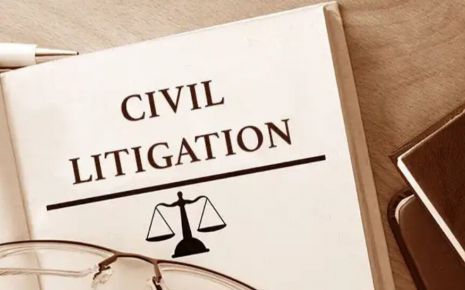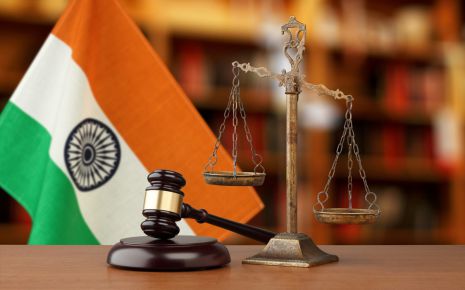Unfolding The Saga: Former Employees As Arbitrators In India
The discourse surrounding the unilateral appointment of arbitrators and the
subsequent unfairness and unequal treatment of the parties is lengthy and
tedious, one which primarily revolves around dissecting important pronouncements
from the judicial machinery. Even so, in the course of this debate, an extremely
significant question that frequently arises is that of the nomination of
retired/ex-employees as arbitrators to a suit.
While the genesis of this conversation can be traced all the way back to the institution of the Arbitration and Conciliation Act, 1996, it is essential to specifically understand it in the context of the (Amendment) Act of 20151. Prior to this amendment, arbitration in India seemed to have been plagued by exorbitant costs and delayed, drawn-out hearings.
The Act thus not only made several substantial remedies in order to address these problems, but also helped in bestowing more confidence to the arbitrating parties. One such significant development in this context was the insertion of Schedules 5 and 7, which listed the grounds that would give rise to justifiable doubt in the procedure of appointing an arbitrator, and a category of relationships that would render the appointment of the arbitrator ineligible, respectively.
Analysing Judicial Trends
While a combined reading of these schedules along with Section 12(5) & Section 11(8) of the Act only disallowed current employees from performing the functions of an arbitrator, the status of a former employee was yet to be ascertained. It wasn't until Voestalpine2, two years after the amendment, that this concern was finally addressed.
As is stated in paragraphs 26 & 29 of the judgement, a former employee (such as a retired officer), cannot be treated as disentitled to act as an arbitrator simply due to his erstwhile occupation alongside/under one of the parties. This is due to the simple reason that neither does there exist a mention of such persons in the aforementioned schedules, nor are they contained in the red and orange list of the IBA guidelines on conflict of interest in international arbitration (from where schedule 7 has been drawn).
Such an appointment was thus held not violative of the 2015 Amendment, only as long as the former employee was not directly associated with the organization that is one of the parties. The Court thereby urged that such arbitration panels should be broad based; cultivating a "healthy arbitration environment and conducive arbitration culture" in the nation.
In less than no time, this decision saw application in TRF Ltd 3, wherein a sole arbitrator was appointed by the Managing Director of the (respondent) party. It was argued that such appointment should be considered ultra vires the (Amendment) Act of 2015 - since the amendment prohibits the Managing Director himself to act as an arbitrator, an appointment made by him in the same regard should also be affected.
This would especially be essential in order to accommodate a sufficiently diverse panel of arbitrators. The Court thus upholding the doctrine of colourable legislation, extended the statutory block of the barred person to their nominee as well. Similarly, in Perkins Eastman4, the CMD was barred from appointing an arbitrator as he was an interested party to the dispute and was consequently ex facie invalidated from making a nomination. The same was upheld for a Board of Managing Directors in Prodattur Cable5.
Heretofore, the interpretation and implementation of this test can be said to have been centered around "nemo judex in causa sua" - one must not be a judge in his own cause. However, it was not till Central Organisation for Railway Electrification6, almost four years succeeding the Amendment, that there was a departure from the norm that had been established thus far.
The court, while reaffirming that a retired person would not be rendered ineligible, simultaneously pronounced that such former officers directly associated with the organization that is one of the parties should be on the arbitration panel, as they possess significant expertise in certain technical aspects. Furthermore, the Court declared that the observation regarding curating a more varied panel in Voestalpine was exhaustive and merely by way of a suggestion.
What remains ultimately is two contrasting judgements; one where the party had been unable to empanel its own retired employees, and another (instant case) where the panel proposed had been sustained, even though it consisted almost exclusively of its ex-employees - despite which, both decisions consistently continued to emphasize the importance of the arbitrator being fair and impartial.
While the latter has since been upheld in subsequent cases, it has put in place a rather superficial and almost specious test instead of setting clear precedent, providing what can only be called a platform to such partisan persons and thereby threatening the exchange of free ideas - entirely defeating the purpose of appointing an arbitrator to begin with.
At the same time, it is also important to acknowledge that the initial test from Voestalpine too, was at its core vague, artificial and not free from criticism; determining whether a panel is "broad based" or not is an extremely subjective criteria that runs the risk of becoming diluted, thereby weakening the very fundamental ideal it seeks to uphold. Moreover, the ethical considerations associated with appointing individuals with prior employment experience to arbitrate cases are overlooked, shedding light on a contentious yet prevalent aspect of alternative dispute resolution.
Conclusion
More often than not, parties tend to focus only on one goal - winning the suit, which results in unilateral appointments made with just this primary objective in mind. While Courts have undeviatingly reiterated the significance of neutrality of arbitrators (from TRF Ltd to M/S Hedge Finance), there remain gaps that are yet to be looked at. Ultimately, the current system of such appointments requires further modifications and additions, and urgently necessitates the development of an appropriate mechanism to tackle these issues in order to facilitate wider implementation of this constructive dispute resolution technique in the legal system.
End-Notes:
While the genesis of this conversation can be traced all the way back to the institution of the Arbitration and Conciliation Act, 1996, it is essential to specifically understand it in the context of the (Amendment) Act of 20151. Prior to this amendment, arbitration in India seemed to have been plagued by exorbitant costs and delayed, drawn-out hearings.
The Act thus not only made several substantial remedies in order to address these problems, but also helped in bestowing more confidence to the arbitrating parties. One such significant development in this context was the insertion of Schedules 5 and 7, which listed the grounds that would give rise to justifiable doubt in the procedure of appointing an arbitrator, and a category of relationships that would render the appointment of the arbitrator ineligible, respectively.
Analysing Judicial Trends
While a combined reading of these schedules along with Section 12(5) & Section 11(8) of the Act only disallowed current employees from performing the functions of an arbitrator, the status of a former employee was yet to be ascertained. It wasn't until Voestalpine2, two years after the amendment, that this concern was finally addressed.
As is stated in paragraphs 26 & 29 of the judgement, a former employee (such as a retired officer), cannot be treated as disentitled to act as an arbitrator simply due to his erstwhile occupation alongside/under one of the parties. This is due to the simple reason that neither does there exist a mention of such persons in the aforementioned schedules, nor are they contained in the red and orange list of the IBA guidelines on conflict of interest in international arbitration (from where schedule 7 has been drawn).
Such an appointment was thus held not violative of the 2015 Amendment, only as long as the former employee was not directly associated with the organization that is one of the parties. The Court thereby urged that such arbitration panels should be broad based; cultivating a "healthy arbitration environment and conducive arbitration culture" in the nation.
In less than no time, this decision saw application in TRF Ltd 3, wherein a sole arbitrator was appointed by the Managing Director of the (respondent) party. It was argued that such appointment should be considered ultra vires the (Amendment) Act of 2015 - since the amendment prohibits the Managing Director himself to act as an arbitrator, an appointment made by him in the same regard should also be affected.
This would especially be essential in order to accommodate a sufficiently diverse panel of arbitrators. The Court thus upholding the doctrine of colourable legislation, extended the statutory block of the barred person to their nominee as well. Similarly, in Perkins Eastman4, the CMD was barred from appointing an arbitrator as he was an interested party to the dispute and was consequently ex facie invalidated from making a nomination. The same was upheld for a Board of Managing Directors in Prodattur Cable5.
Heretofore, the interpretation and implementation of this test can be said to have been centered around "nemo judex in causa sua" - one must not be a judge in his own cause. However, it was not till Central Organisation for Railway Electrification6, almost four years succeeding the Amendment, that there was a departure from the norm that had been established thus far.
The court, while reaffirming that a retired person would not be rendered ineligible, simultaneously pronounced that such former officers directly associated with the organization that is one of the parties should be on the arbitration panel, as they possess significant expertise in certain technical aspects. Furthermore, the Court declared that the observation regarding curating a more varied panel in Voestalpine was exhaustive and merely by way of a suggestion.
What remains ultimately is two contrasting judgements; one where the party had been unable to empanel its own retired employees, and another (instant case) where the panel proposed had been sustained, even though it consisted almost exclusively of its ex-employees - despite which, both decisions consistently continued to emphasize the importance of the arbitrator being fair and impartial.
While the latter has since been upheld in subsequent cases, it has put in place a rather superficial and almost specious test instead of setting clear precedent, providing what can only be called a platform to such partisan persons and thereby threatening the exchange of free ideas - entirely defeating the purpose of appointing an arbitrator to begin with.
At the same time, it is also important to acknowledge that the initial test from Voestalpine too, was at its core vague, artificial and not free from criticism; determining whether a panel is "broad based" or not is an extremely subjective criteria that runs the risk of becoming diluted, thereby weakening the very fundamental ideal it seeks to uphold. Moreover, the ethical considerations associated with appointing individuals with prior employment experience to arbitrate cases are overlooked, shedding light on a contentious yet prevalent aspect of alternative dispute resolution.
Conclusion
More often than not, parties tend to focus only on one goal - winning the suit, which results in unilateral appointments made with just this primary objective in mind. While Courts have undeviatingly reiterated the significance of neutrality of arbitrators (from TRF Ltd to M/S Hedge Finance), there remain gaps that are yet to be looked at. Ultimately, the current system of such appointments requires further modifications and additions, and urgently necessitates the development of an appropriate mechanism to tackle these issues in order to facilitate wider implementation of this constructive dispute resolution technique in the legal system.
End-Notes:
- The Arbitration and Conciliation (Amendment) Act, 2015, No. 3, Acts of Parliament, 2015 (India).
- M/S. Voestalpine Schienen GMBH v. DMRC Ltd, (2017) 4 SCC 665.
- TRF Ltd. v. Energo Engineering Projects Ltd., (2017) 8 SCC 377.
- Perkins Eastman Architects DPC v. HSCC, 2019 S.C.C. Online SC 1517.
- Proddatur Cable Tv Digi Services v. Siti Cable Network Limited, 2020 SCC OnLine Del 350.
- Central Organisation for Railway Electrification v. ECI-SPIC-SMO-MCML (JV), (2020) 14 SCC 712.
Law Article in India
Legal Question & Answers
Lawyers in India - Search By City
LawArticles
How To File For Mutual Divorce In Delhi

How To File For Mutual Divorce In Delhi Mutual Consent Divorce is the Simplest Way to Obtain a D...
Increased Age For Girls Marriage

It is hoped that the Prohibition of Child Marriage (Amendment) Bill, 2021, which intends to inc...
Facade of Social Media

One may very easily get absorbed in the lives of others as one scrolls through a Facebook news ...
Section 482 CrPc - Quashing Of FIR: Guid...

The Inherent power under Section 482 in The Code Of Criminal Procedure, 1973 (37th Chapter of t...
The Uniform Civil Code (UCC) in India: A...

The Uniform Civil Code (UCC) is a concept that proposes the unification of personal laws across...
Role Of Artificial Intelligence In Legal...

Artificial intelligence (AI) is revolutionizing various sectors of the economy, and the legal i...







Please Drop Your Comments